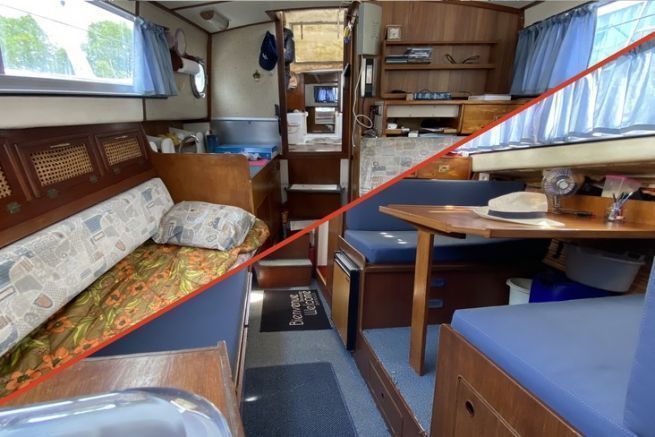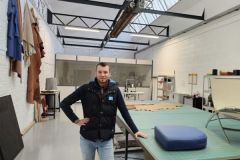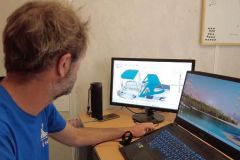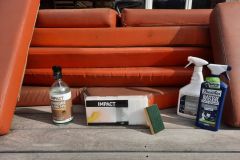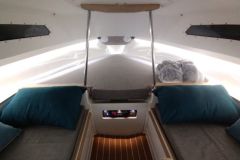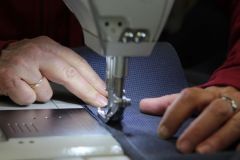This Amerglass dates from 1973. No doubt the cushions have already been redone over the 50 years of the boat's life. The quality of the fabric in place was very good, the covers still in good condition. Only the print of the fabric had difficulty to hide its age. To sail serenely (the famous peace of mind), it was necessary to renovate the upholstery. For this, we called upon a saddler, a true craftsman in the noble sense of the term. La Sellerie Not in Toulouse took the job in hand.
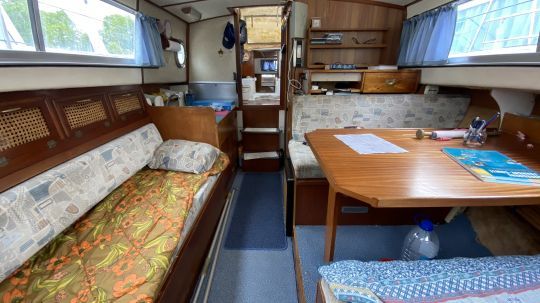
After a visit on board and a precise analysis of the existing, it was decided not to change the foams. They are still hard and comfortable enough. Only the covers will be replaced.
Woven PVC fabric
With the advice of Christophe Not the saddler, we chose a fabric from the French manufacturer Serge Ferrari. It is the Batyline Elios in a navy blue color (among a choice of 10 colors). Despite a very soft touch, we are surprised to discover that this fabric is only a woven PVC. Unlike woven nylon which is then coated with PVC to protect it, the Batyline is directly made of woven PVC to form the weft. Thus, this fabric is not waterproof, but its fibers cannot get dirty. Make a greasy stain on the fabric and a simple sponge stroke is enough to make it disappear (we tested on a sample!). In addition, this fabric supports very well the UV and can be installed as well inside as outside.
Step by step manufacturing at the saddlery
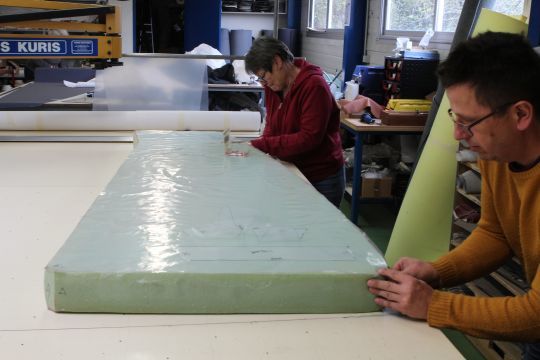
The foam from the cushions is used to draw the templates on transparent canvas which is then cut out. To stay in place, large needles are stuck directly into the foam.
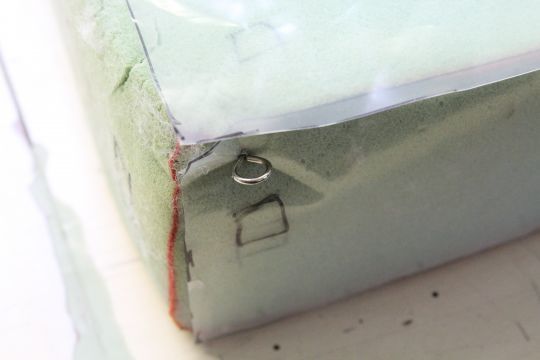
Markers are placed on the corners (here squares, but other sewers use letters or numbers). This allows you to replace the templates when assembling.
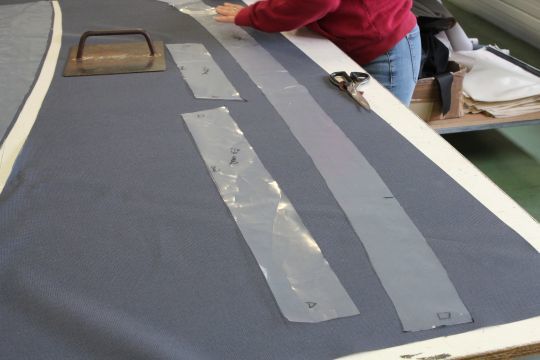
By placing the templates on the fabric, we will be able to trace the cuts.
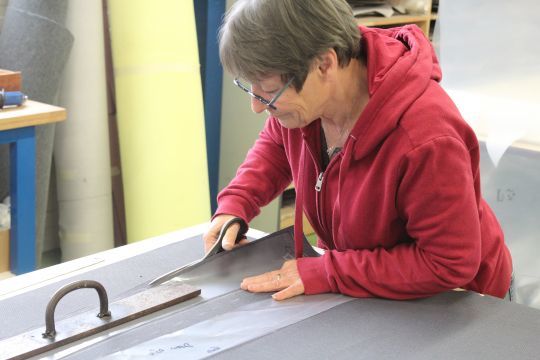
The fabric is cut according to the tracings. We see that the line is not flush with the template, because it includes a margin for sewing. Here the know-how of the seamstress takes all its value.
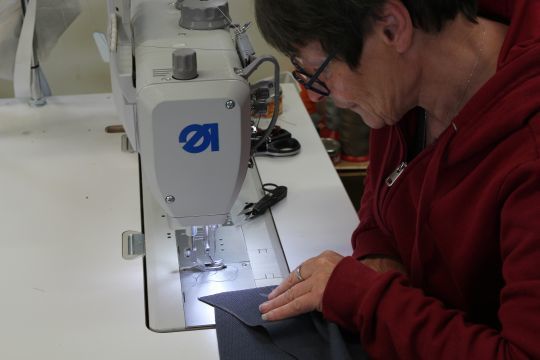
By positioning the markings one on top of the other, the pieces are assembled by sewing on the reverse side.
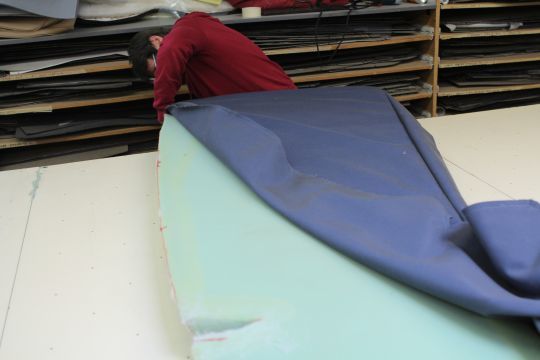
Before assembling the underside, we come to try the cover to check the first seams and the right dimensions.
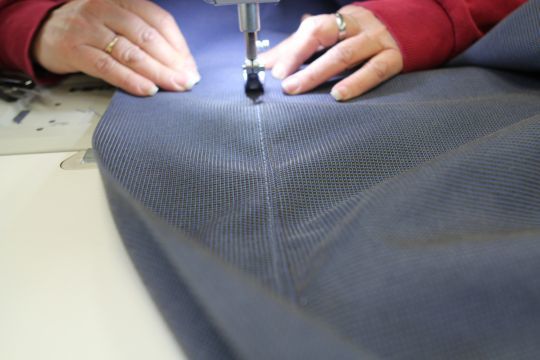
On the visible side, a second stitch crushes the first one on the bottom.
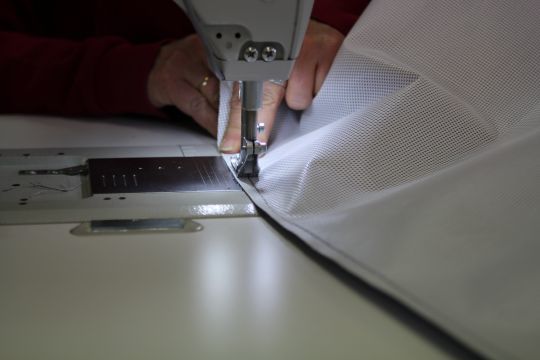
In order for the entire cushion to breathe well and to limit mold and mildew, you need a well ventilated fabric. We used Soltis Horizon 86, a microperforated fabric from Serge Ferrari.
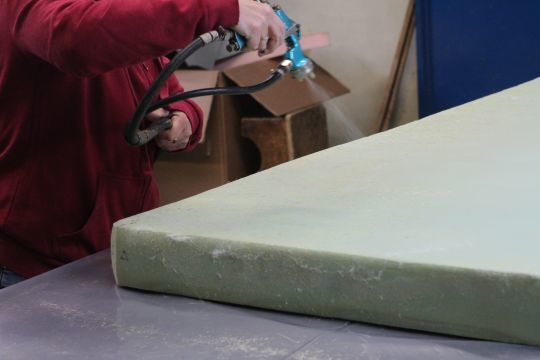
In order to offer more comfort and a better seating, the top of the cushion is covered with a wadding. This one is glued with neoprene glue projected directly on the foam.
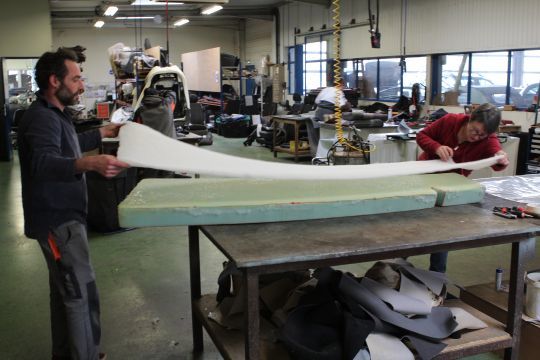
The wadding, previously cut to shape with the templates, is positioned on top of the cushion.
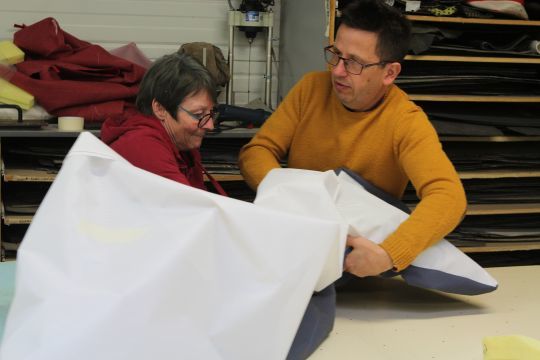
This is the most physical part of the operation: putting the foam into the cover. Indeed, this one does not slip and it is necessary to accompany it in the slightest angles.
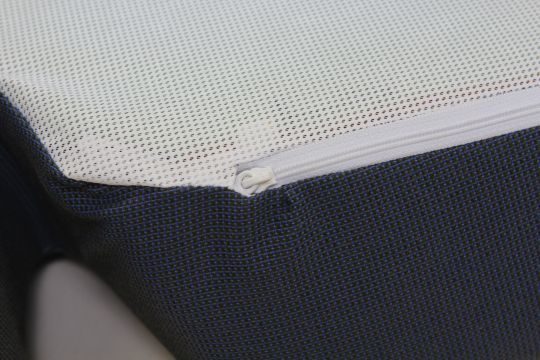
On the bottom, at the back, the cushion is closed by a zip. This leaves the possibility of disassembly.
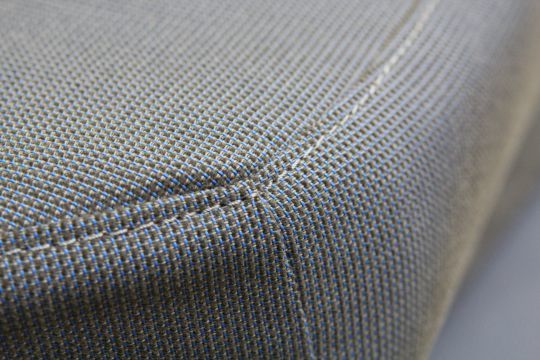
With the double stitching, the finish is perfect.
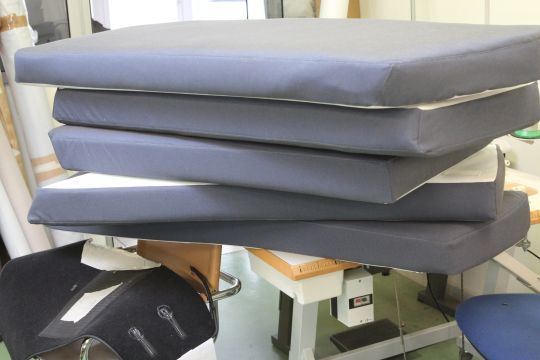
The pile of cushions is ready to be put back on the boat.
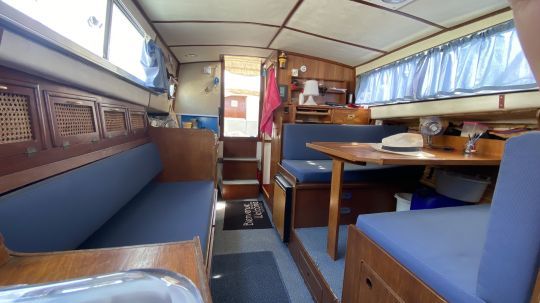
The new interior with its blue cushions.
